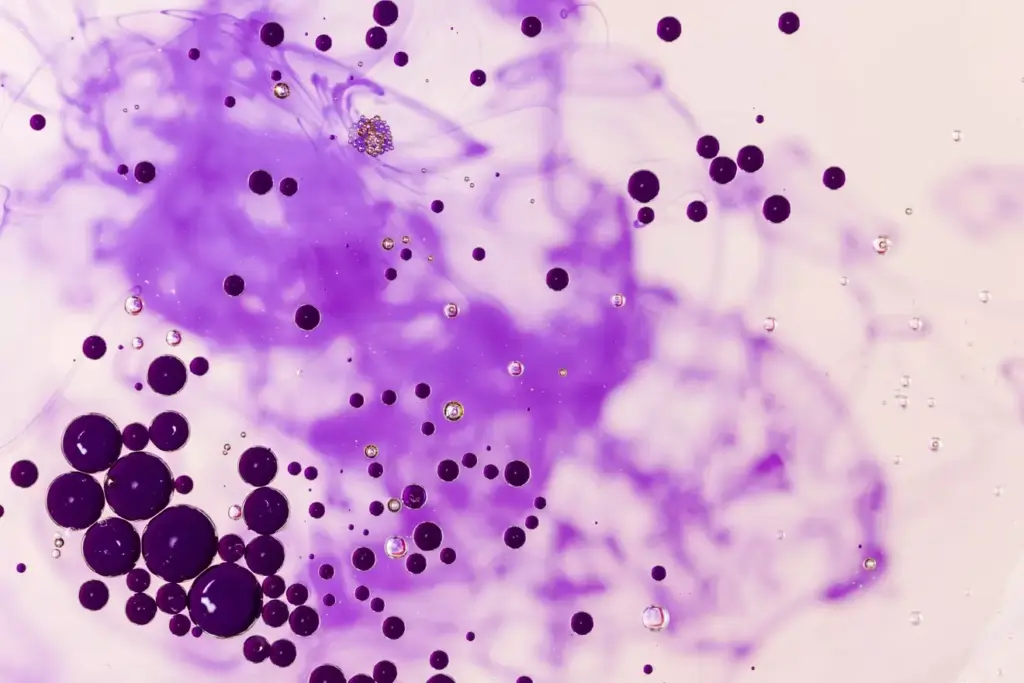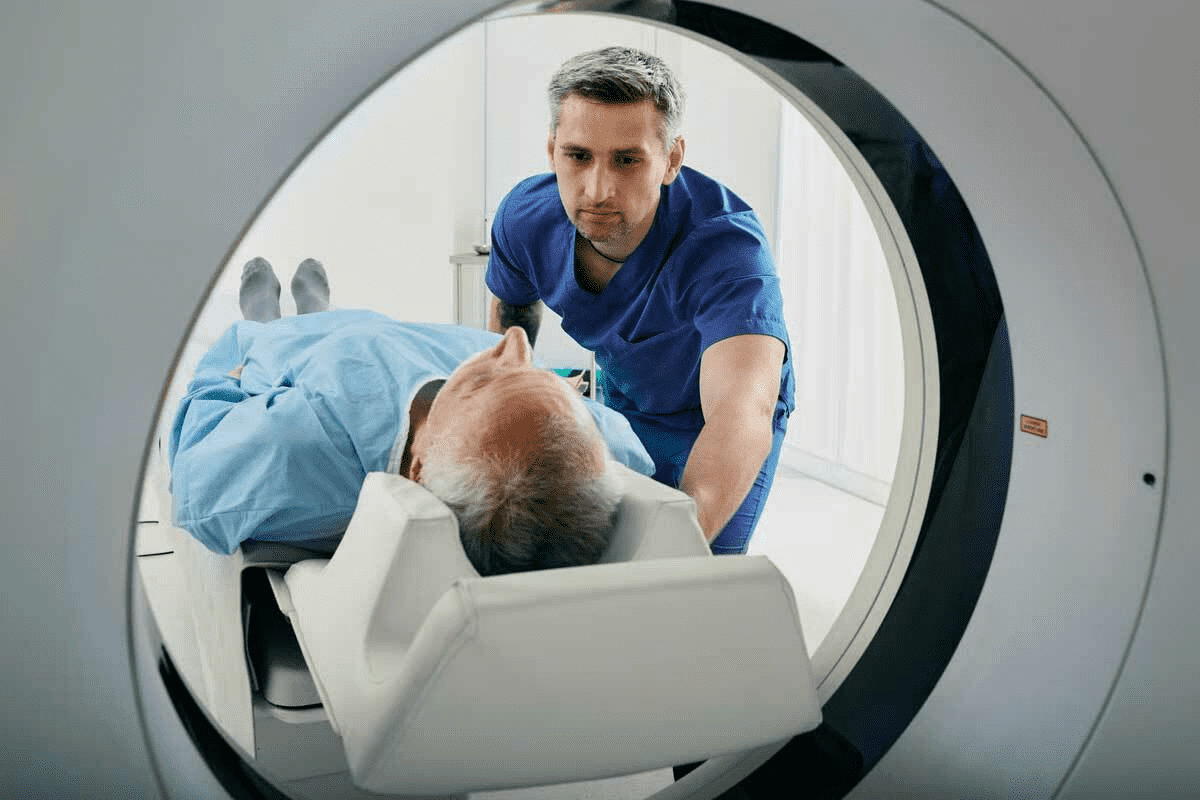Last Updated on November 26, 2025 by Bilal Hasdemir

At Liv Hospital, we know how key a strong immune system is. B cells, or B lymphocytes, are vital in this fight against infections. They produce antibodies to help our body defend itself.
Our body’s defense mechanism counts on B cells to manage immune responses and present antigens. B cells are made in the bone marrow. They grow up in the spleen and lymph nodes, ready to fight off invaders. Knowing how B cells work helps us understand how our immune system keeps us safe.
Key Takeaways
- B cells are key in making antibodies to fight infections.
- B cells are made in the bone marrow.
- B cells grow up in the spleen and lymph nodes.
- They get activated when they meet antigens.
- B cells are important in managing our immune responses.
The Essential Role of B Lymphocytes in Adaptive Immunity
B cells are key players in the adaptive immune system. They help protect us from harmful pathogens.
Definition and Classification of B Cells
B cells, or B lymphocytes, are a type of white blood cell. They grow into cells that make antibodies. These cells are essential for humoral immunity, which fights off antigens. B cells come in different types, each with its own job.
B Cells as Critical Components of Immune Defense
B cells make antibodies to fight pathogens. This makes them very important for our defense. They also help present antigens and make cytokines, which shape the immune response.
Some key functions of B cells include:
- Producing antibodies to fight infections
- Presenting antigens to T cells
- Regulating immune responses through cytokine production
B cells’ ability to make antibodies and control immune responses is vital. They are a key part of our immune system.
B Cell Lineage: From Stem Cells to Mature Lymphocytes
B cells start from stem cells and go through many stages to become mature lymphocytes. This journey is key for a strong immune system.
Origin from Hematopoietic Stem Cells
B cells come from hematopoietic stem cells in the bone marrow. These stem cells can turn into different blood cells, like B cells, thanks to genetic and environmental signals.
The growth of B cells from these stem cells is tightly controlled. Many genes and signals work together to guide this process. This ensures B cells develop correctly through each stage.
Developmental Stages in B Cell Formation
B cell development has several stages: early pro-B cell, late pro-B cell, pre-B cell, immature B cell, and mature B cell. Each stage has unique genetic changes and specific markers on the cell surface.
V(D)J recombination happens in the pro-B cell stage. It mixes variable, diversity, and joining gene segments to create a wide range of antibodies. V(D)J recombination is key for B cells to recognize many pathogens.
After V(D)J recombination, B cells go through positive and negative selection. Positive selection picks B cells with good antigen receptors. Negative selection removes B cells that might attack the body’s own cells, preventing autoimmune diseases.
The last stage makes mature B cells ready to fight antigens. These mature B cells can turn into plasma cells or memory B cells to fight off infections.
Where Are B Lymphocytes Produced and Formed?
It’s important to know where B lymphocytes are made to understand our immune system. B lymphocytes, or B cells, are key to our adaptive immunity. Their creation is a complex process happening in specific parts of our body.
The Bone Marrow: Primary Production Site
The bone marrow is the main place for B cell production. Here, hematopoietic stem cells turn into B cells. This process needs the help of many cell types, growth factors, and genes.
Regulation of B Lymphocyte Production
The making of B lymphocytes is carefully controlled. This ensures our B cells can fight many different pathogens. This control balances cell growth, change, and death.
Several important factors help B cell development:
- Growth factors help B cell progenitors grow and change.
- Transcription factors control gene expression at different B cell stages.
- Interactions with stromal cells in the bone marrow give B cells the signals they need to mature.
Knowing how B lymphocytes are made helps us understand immune problems. It also helps us find new treatments.
B Cells Function: Primary Roles in Immune Response
B cells are key players in the adaptive immune system. They help defend the body by making antibodies, presenting antigens, and regulating the immune response with cytokines. Their ability to adapt to different pathogens is essential for a strong immune response.
Antibody Production and Humoral Immunity
B cells are famous for making antibodies, which are vital for humoral immunity. When they meet specific antigens, they become activated and start making antibody-secreting plasma cells. These antibodies help mark and destroy or neutralize antigens.
The process of making antibodies involves class switching and affinity maturation. This allows the immune system to adjust its response to the antigen and the infection stage. At first, B cells make IgM antibodies for quick protection. Later, they can switch to making IgG, IgA, or IgE antibodies, each with unique functions.
Antigen Presentation Capabilities
B cells also play a big role in antigen presentation. They can process and present antigens to T cells, helping activate T cell responses. This teamwork between B cells and T cells is key for a well-coordinated immune response.
In germinal center reactions, B cells work with follicular helper T cells to improve their antibody responses.
Cytokine Production and Immune Regulation
B cells help regulate the immune response by making cytokines. Different B cell subsets can produce various cytokines, guiding the immune response. For instance, some B cells make IL-10, which helps reduce inflammation, while others support T cell activation.
This ability to produce cytokines shows B cells’ role in regulating the immune response. They can adjust the response based on the situation.
Where Do B Cells Become Activated?
B cells get activated when they meet antigens. This happens in peripheral lymphoid organs. These places, like the spleen and lymph nodes, are key for B cells to meet and fight antigens.
Peripheral Lymphoid Organs
Peripheral lymphoid organs help B cells and antigens meet. The spleen is important for B cells to fight blood-borne antigens. Lymph nodes are where B cells fight antigens from other parts of the body.
These organs are set up to help B cells fight off antigens well. For example, lymph nodes have special areas for B cells to meet and fight antigens.
Activation Mechanisms and Pathways
Getting B cells to activate is a complex process. Antigen recognition is the first step, where B cells bind to antigens. Then, the antigen is taken inside and broken down, and presented to T cells.
T cell help is key for B cells to fully activate, for some antigens. T cells give B cells the signals and help they need to grow and become plasma cells or memory B cells.
The steps to activation include:
- Antigen binding and internalization
- Antigen presentation to T cells
- T cell help and co-stimulation
- B cell proliferation and differentiation
Knowing these steps helps us understand how B cells protect us and how problems can occur.
Most Activated B Lymphocytes Differentiate Into Antibody-Producing Cells
When B lymphocytes are activated, they turn into specialized cells. These cells are key to fighting off infections. This change is vital for the body’s defense.
The Transformation into Plasma Cells
Most B cells become plasma cells after activation. Plasma cells are like factories that make antibodies. These antibodies help fight off pathogens by binding to them.
Plasma cells have a lot of endoplasmic reticulum. This is needed for making lots of antibodies.
| Characteristics | B Cells | Plasma Cells |
|---|---|---|
| Primary Function | Antigen Recognition | Antibody Production |
| Antibody Production Level | Low | High |
| Lifespan | Variable | Short-lived |
Memory B Cells: Guardians of Long-Term Immunity
Not all B cells turn into plasma cells. Some become memory B cells. These cells help the body remember specific threats. They can quickly respond if the threat comes back.
Memory B cells can stay dormant for years. When they’re reactivated, they quickly make lots of antibodies. This helps prevent diseases.
Vaccines work by creating memory B cells. These cells remember specific antigens. This helps the body fight off diseases more effectively.
Histology of B Cells and Their Identification
Studying B cells is key to understanding the immune system. B cells, or B lymphocytes, are vital for adaptive immunity. They help diagnose and treat immune-related disorders.
Microscopic Appearance and Structural Features
B cells can be seen under a microscope. They look like small, round lymphocytes with a big nucleus. Their cell surface markers, like CD19, CD20, and CD21, help identify them.
They can be stained using immunohistochemistry. This method spots specific antigens on B cells. It helps in their identification and study.
Histological Differences Between B Cell Subtypes
There are different B cell subtypes, each with unique features. Naive B cells, memory B cells, and plasma cells each have a role in the immune response.
- Naive B cells have surface IgM and IgD.
- Memory B cells have switched classes and show different immunoglobulin isotypes.
- Plasma cells are mature B cells that produce lots of antibodies.
Knowing these differences is vital for diagnosing and treating B cell-related issues. This includes lymphomas and autoimmune diseases.
B Cell Dysfunction and Related Disorders
B cells are key to our immune system. When they don’t work right, it can cause many health problems. These include immunodeficiencies, malignancies, and autoimmune conditions.
Immunodeficiencies Involving B Cells
Immunodeficiencies linked to B cells happen when B cell development or function is faulty. Bruton’s agammaglobulinemia is a genetic disorder. It affects antibody production, making people more likely to get sick.
Common Variable Immunodeficiency (CVID) is another issue. Here, B cells are present but can’t make enough antibodies. This leads to frequent infections.
B Cell Malignancies and Autoimmune Conditions
B cell malignancies include lymphomas and leukemias. For example, Diffuse Large B-Cell Lymphoma (DLBCL) is a fast-growing lymphoma. It needs quick treatment.
Autoimmune conditions like Rheumatoid Arthritis (RA) and Lupus also involve B cells. In RA, B cells make autoantibodies that cause joint pain.
It’s important to understand B cell dysfunction and related disorders. This knowledge helps in finding better treatments. Research is ongoing, giving hope for better patient care.
- B cell dysfunction can lead to various immunological disorders.
- Immunodeficiencies, such as Bruton’s agammaglobulinemia, result from defects in B cell development.
- B cell malignancies include lymphomas and leukemias.
- Autoimmune conditions like RA and Lupus involve pathogenic B cell activity.
Conclusion: The Vital Importance of B Cells in Immune Defense
B cells are key to our immune system’s defense. Their problems can cause many immune issues. We’ve seen how they make antibodies, present antigens, and produce cytokines. These actions are vital for our immune response.
The role of B cells in defending us is huge. They turn into plasma cells and memory B cells. This lets our immune system fight off infections and remember them for the future. Knowing how B cells work is key to treating immune problems.
Research on B cells keeps growing our understanding of the immune system. By learning more about how B cells work, we can find new ways to help the immune system. This shows how important B cells are for our health.
As we learn more about B cells, we can better fight immune diseases. This helps us give better care to those with immune system issues. It’s a big step forward in helping patients.
What is the primary function of B cells in the immune system?
B cells fight infections by making antibodies. They also help control the immune system’s response.
Where are B cells produced?
B cells start in the bone marrow. They come from hematopoietic stem cells.
Where do B cells mature?
B cells grow up in the spleen and lymph nodes.
What is the role of B cells in humoral immunity?
B cells are key in humoral immunity. They make antibodies to fight specific germs.
How are B cells activated?
B cells get activated in the spleen and lymph nodes. This happens through recognizing antigens and getting help from T cells.
What happens to activated B cells?
Once activated, B cells turn into plasma cells or memory B cells. Plasma cells make lots of antibodies. Memory B cells remember germs for future fights.
What is the function of plasma cells?
Plasma cells make a lot of antibodies. These antibodies help fight infections.
What is the role of memory B cells?
Memory B cells help us fight the same germs again. They provide long-term immunity.
How can B cells be identified?
B cells can be found using special staining techniques. These methods look at their unique characteristics.
What are some disorders associated with B cell dysfunction?
B cell problems can lead to diseases like immunodeficiency, cancer, and autoimmune diseases. Examples include Bruton’s agammaglobulinemia, B cell cancers, and conditions like rheumatoid arthritis and lupus.
What is the significance of understanding B cell biology?
Knowing about B cells is vital. It helps us diagnose and treat immune system disorders.
References
- Althwaiqeb SA. Histology, B-Cell Lymphocyte (StatPearls, NBK560905). Available from: https://www.ncbi.nlm.nih.gov/books/NBK560905/
- Merck Manuals. Overview of B- and T-cell function [Video]. Available from: https://www.merckmanuals.com/home/multimedia/video/overview-of-b-and-t-cell-function
- LeBien TW, Tedder TF. B-lymphocytes: how they develop and function. Blood. 2008;112(5):1570-1580. Available from: https://ashpublications.org/blood/article/112/5/1570/25424/B-lymphocytes-how-they-develop-and-function
- British Society for Immunology / Immunology.org. B cells (B-lymphocytes). Available from: https://www.immunology.org/public-information/bitesized-immunology/cells/b-cells (immunology.org)
- Rastogi I, Jeon H, Moseman EA, Muralidhar N, Potluri S, McNeel DG. Role of B cells as antigen presenting cells. Frontiers in Immunology. 2022;13:954936. Available from: https://www.frontiersin.org/journals/immunology/articles/10.3389/fimmu.2022.954936/full (Frontiers)








